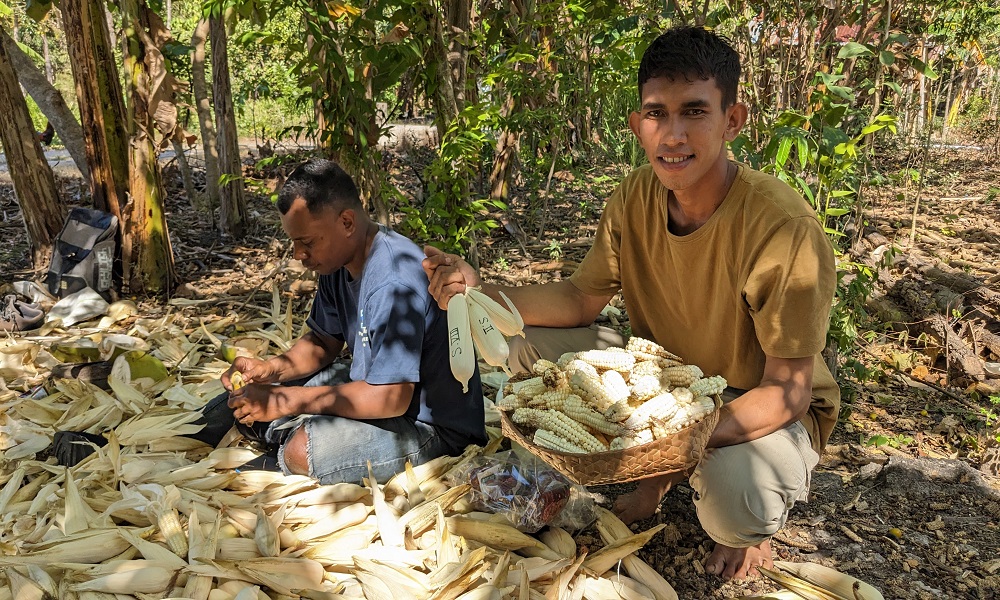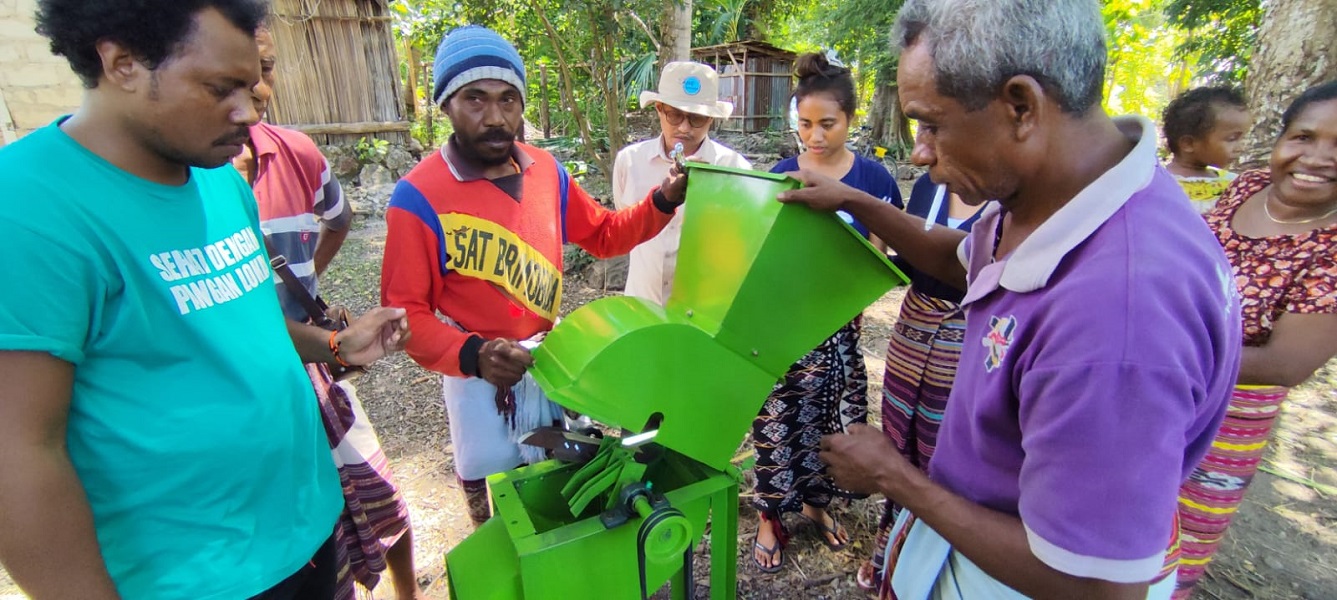
The Tafena Kuan OMB group has chosen maize as their preferred commodity to cultivate, with the pulut maize variety being the main choice. In this cultivation process, the best treatment applied is the use of liquid fertiliser applied every two weeks. To ensure crop quality, seed selection is done by selecting large, uniform grains from the centre of the cob. Based on the results of the study, the best planting time for pulut corn is between May and June, with optimal harvest time in August to September.
The group also developed maize processing using appropriate technology. After approximately two years of participating in the field school programme, they have developed skills in maize cultivation and processing, which are key assets in diversifying maize products. Traditionally, maize in Kairane Village was only shelled and processed into snacks such as corn katemak. However, with varying maize quality and maize stalks that previously had no economic value, processing innovations now allow for the utilisation of all parts of the maize. With the new maize processing machine, low-quality maize and corn stalks can be processed into animal feed, allowing all parts of the maize to be utilised to their full potential.

Previously, it took the OMB group in Kairane Village an entire day just to manually shell the maize. Now, in the same amount of time, they can shell, grind, sort, and package the processed maize into various products, from flour to animal feed. This increased efficiency not only saves time and labour, but also significantly increases productivity and the quality of the processed products. In one day, the group is able to produce 5 to 8kg of maize flour and animal feed.

Tafena Kuan OMB saw great opportunities in diversifying maize processing by utilising new technology. The arrival of this state-of-the-art equipment not only increased their production capacity, but also opened up a new paradigm for members. The group's participation in the field school also proved to bring about significant changes. Through the training, trials, and mentoring provided, the maize processing paradigm among group members is slowly changing. They not only learnt more efficient processing techniques, but also understood the importance of product diversification to increase the added value of maize.

